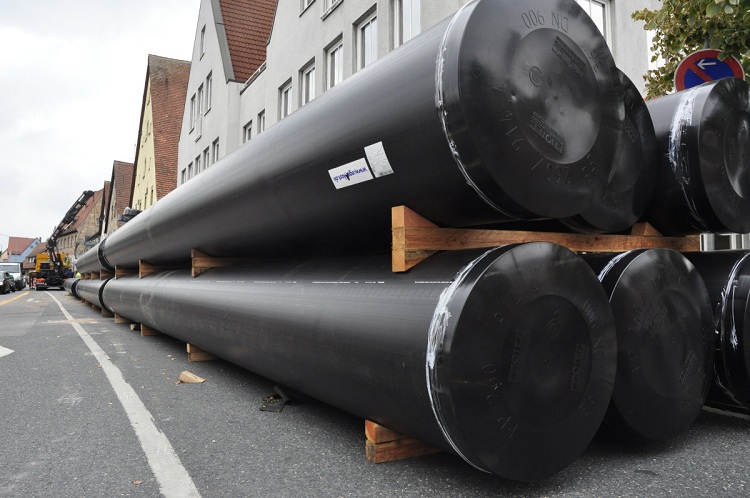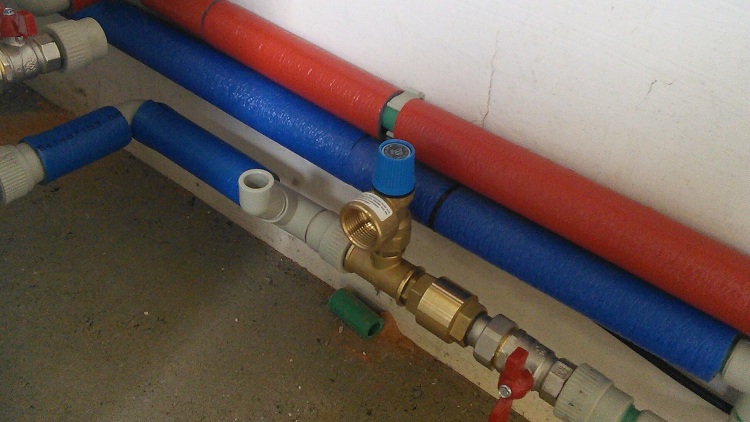Plumbing systems made of plastic have a large number of advantages, and therefore are used in almost all areas of industry and economy. The use of plastic products simplifies installation and operation, as well as these products are environmentally friendly. At present, the production of plastic pipes is so adjusted that gradually aging metal pipes have almost no chance. The assortment of polymer pipes is very wide: new concepts are constantly being developed and old ones are modified.
Content
What are the plastic piping systems
Plastic pipes are universal, therefore they are used almost everywhere, where in principle there is a need for the use of pipe products. The following types of plastic piping exist:
- polyethylene (HDPE and LDPE);
- polyvinyl chloride (PVC);
- polypropylene;
- metal-plastic.
Each polymer material has completely different properties and is used for special tasks. Only a few areas in which successfully used plastic piping systems.
Water pipes. Perhaps the most commonly used polymers in this area. In all new buildings, only plastic water pipes are installed, and in old apartment buildings, metal systems are almost completely replaced by polymer pipe products. The decisive factor in favor of plastic in this case is its environmental friendliness. Pipelines made of black steel are subject to rust, particles of harmful impurities quickly settle on them, so water from such a pipeline very often acquires dangerous properties. In case of plastic pipes such a scenario is not possible.
Hot water and heating. Pipes with improved chemical composition, designed specifically for use in high temperature conditions, also show better results compared to metal products. Firstly, they have less thermal conductivity, respectively, the heat loss will be much smaller. Secondly, a plastic pipe does not heat up to very high temperatures: simply put, it is impossible to burn about it in the heating season.
Models for operation at low temperatures. There is a special category of plastic products - frost-resistant pipes. Such options also have a modified composition that eliminates the fragility of the plastic at lower temperatures - a standard property of polymers. They are widely used for transporting media over long distances, for conducting sewage and water supply in the ground, as well as for protecting electrical systems and cables.
All of these varieties combine increased resistance to aggressive chemical attack and complete inertness of the material. Due to these properties, even low concentrated acids can be transported through a plastic pipe.

The properties of some types of pipes allow them to be used in harsh conditions and for transporting aggressive substances
What are rectangular plastic pipes for?
Separately, it is worth mentioning the profile plastic pipes. These products, unlike other varieties of polymer pipe products, are not highly specialized. Square and rectangular profiles are not widespread in the field of water or gas supply, but they have become in demand in many other areas. There are several options for using a plastic profile.
Organization of a ventilation system. The need to install air ducts appeared not only in industrial conditions, but also in residential premises. Plastic ducts are best suited as air ducts: the polymer does not show significant resistance to the moving air flow, so air masses with dust and other waste particles move along the channel easily, and ventilation equipment works efficiently and economically.
Furniture construction. Using plastic profiles, fairly inexpensive but durable furniture is produced. Of course, plastic furniture will not have particularly high aesthetic qualities, but it is perfect for, for example, arranging a summer terrace. In addition, profile products are also used in the advertising industry: with the help of polymer profiles, advertising billboards and billboards are mounted.
Cable and wire protection. Using a plastic profile pipe, you can get a durable and high-quality cable channel to protect the wires from mechanical damage, dust and moisture.
Important! Some types of plastic allow you to lay the cable in them even on the facades of the house and in the ground.
The device of fences and greenhouses. In households, plastic profiles have become widespread as an easy and cheap option for installing temporary and permanent structures. Also in agriculture, square pipe products are used as watering poultry and livestock.
For the installation of plastic profiles does not require any special equipment, structures from them can be built using improvised tools and materials.
Application of plastic threaded pipe
The main scope of the use of finished plastic products is casing wells of the water intake, oil pipelines. To solve these issues, pipes must have the necessary rigidity, therefore, only products made of polyvinyl chloride and polyethylene (only low pressure) can be used. Plastic piping systems for wells and oil pipelines must be resistant to shock loads and permanent soil pressure. The thread in this case is necessary for simple and quick installation.
Threaded polyvinyl chloride pipes designed for well organization are usually painted white. Casing pipes for external drainage structures are gray or brown. Pipes made of HDPE are usually blue or black. There are also differences between the casing and the type and location of the thread:
- polymer pipes with threads on both sides;
- products with two external threading options;
- options equipped with either external or internal thread;
- models of pipes with internal (or external) thread located in the socket.
When installing plastic pipelines with threads, both manual and automatic tools can be used. The stiffness of the PVC pipes is sufficient to screw the structure with pipe wrenches without violating its integrity.
Important! In order to prevent threaded sections on a plastic pipe during transportation, they are hidden under special plugs.
The threaded pipe during installation is reinforced with concrete: this is necessary in order to reduce soil pressure and prevent soil from crumbling in the well. This method of strengthening allows you to extend the life and reduce the likelihood of the need for well repair.
What are the features of polypropylene pipes?
Polypropylene pipes are characterized by very high stiffness and maximum ability to withstand high temperatures among all polymers. The range of Ecoplastics pipes manufactured in the Czech Republic is in great demand. The Ecoplastik brand line includes almost all product options that meet current standards. For mass sales, products with diameters from 16 mm to 125 mm are produced, and pipes with a larger diameter can be purchased only by placing an individual order. Of course, such a service will be priced at higher rates.
In order to choose the polypropylene pipe correctly (this applies to products of any brands), it is necessary to pay attention to the pressure level. This indicator is marked with the letters PN and numbers from 10 to 20. The number indicates the number of bar (unit of pressure) that the pipe can withstand as much as possible. PN10 models are cheap and least durable, they are only suitable for simple tasks. PN20 products are used for serious purposes such as organizing a heating system.
Ecoplastics plastic polypropylene pipes can also be reinforced. Such products have increased rigidity, withstand greater pressure and temperature of the internal environment. With their help, the installation of a system for transporting hot water or heating is carried out. To reinforce polypropylene products, either aluminum foil or fiberglass is used (a more practical and reliable option).
The use of pipe products made of polymers can significantly reduce the budget for the construction and repair of pipelines. The installation of plastic pipes is not at all time-consuming, and the constant use of such structures will not have a detrimental effect on human health.










